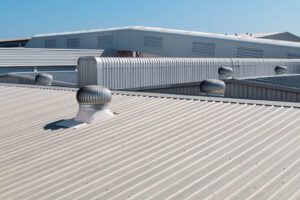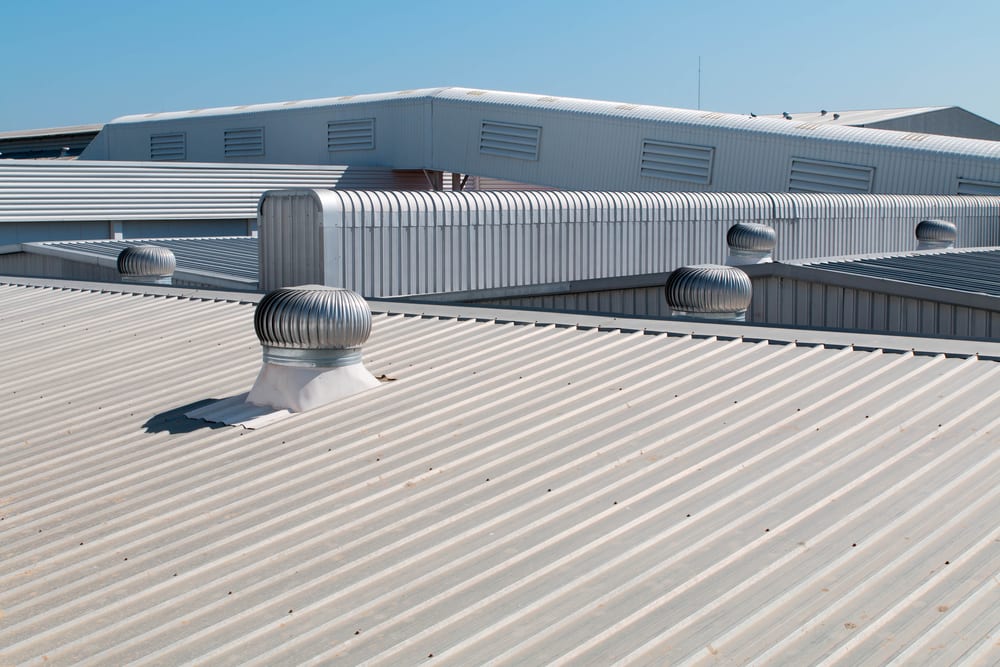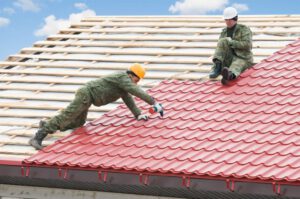There are a few considerations when purchasing new commercial roofing for your building. While price is a big consideration, energy efficiency is an increasingly popular feature. Energy-efficient roofing will also save you money in the long run. Many cities are incorporating energy-efficiency parameters into the permit process. The following are some of the things to consider when purchasing new commercial roofing. If you’re not sure what type of commercial roofing material is right for your building, you can call Sacramento Roofing. They offer a variety of services in roofing and restoration.
 Whether you’re a restaurant, retail outlet, or office building, the type of commercial roof you choose will affect the health of your building. Aside from lifespan, you’ll want to consider energy efficiency and typical weather variations. Every commercial roofing material has its pros and cons, making the decision a difficult one. Consider your options and ask a professional to help you choose the best material for your building. A skilled contractor can determine the best roofing material based on the structure and foot traffic on the roof.
Whether you’re a restaurant, retail outlet, or office building, the type of commercial roof you choose will affect the health of your building. Aside from lifespan, you’ll want to consider energy efficiency and typical weather variations. Every commercial roofing material has its pros and cons, making the decision a difficult one. Consider your options and ask a professional to help you choose the best material for your building. A skilled contractor can determine the best roofing material based on the structure and foot traffic on the roof.
Another important factor to consider is the aesthetics of your roof. While a residential roof will be more visually appealing, a commercial roof will be more difficult to view from the outside. Choosing the right roofing material for your building will depend on the aesthetics of the building and your budget. Consider terracotta, slate, or matte finish steel. In addition, consider the cost. If you’re trying to stay within a budget, a low-sloped roof may not be the best choice.
There are many advantages to metal roofing, including fire resistance. Besides aesthetics, metal roofing also boosts HVAC performance. Additionally, metal roofing is recyclable. Buildings with metal roofing will require regular inspections to ensure their longevity. The typical commercial roof cover is built-up roofing. This consists of several layers of material and has a longer lifespan. The more layers, the stronger the roof. For this reason, commercial roofing is often a better choice for a building than residential roofing.
There are several different types of commercial roofing, including SBS and BUR. Both have their pros and cons. It is important to understand what each type of commercial roofing has to offer. A good choice will increase the value of your property and add to the appearance of your building. If you’re concerned about the environmental impact of your commercial roofing, EPDM is a great option. If you’re trying to reduce your carbon footprint, it’s crucial to consider your energy efficiency.
In the event your roof is leaking, a repair may be sufficient. However, if it’s leaking from the top, a new commercial roofing system may be necessary. Moreover, you should consider the size of your building and the climate and purpose of your commercial property before choosing the appropriate type of commercial roofing for your building. A good roofing system will protect your building for many years to come. If you’re unsure, consult a professional and ask for an estimate.
When shopping for commercial roofing, make sure to look at the warranty and quality of workmanship. The manufacturer should offer a warranty covering the materials and the contractor’s work. Some manufacturers even provide an enhanced warranty, where they inspect the completed roof to ensure that the material is up to par. The longer the warranty, the better the quality of the finished roofing system. If you’re not sure, you can always look for another contractor or use an independent company to install your new commercial roofing.
When hiring a commercial roofing contractor, you’ll want to make sure they offer a variety of services. These services should include roof inspections and provide next steps such as roof replacement, repair, or re-coating. Depending on the material, type of damage, and age of your roof, these services can vary widely. However, it’s important to note that not all commercial roofing repairs are effective. Older commercial roofs may require complete replacement.
EPDM is one of the most popular commercial roofing options. There is a variety of EPDM and TPO membranes available to meet your building’s unique specifications and budget. The price of a new EPDM roof for a 20,000 square foot commercial building is roughly $3.50 to $7.50 per square foot, including materials warranty. While the installation process may be time-consuming, the quality of EPDM roofing is long-lasting and can provide energy savings.
When a building is subject to extreme temperatures, choosing the right roofing material is critical. Some of the best materials are insulated metal claddings. These types of roofs are also lightweight, which makes them an ideal choice for second-generation applications. They are resistant to most chemicals and are highly reflective.


 Despite their varied properties, roofing materials have long been used to protect buildings from the elements. Seagrass is a popular choice for roofing because of its high durability. Bamboo is another popular material. In many countries, bamboo is used for both its inner structure and outer layer. Split bamboo stems are laid alternately or overlapped. Other materials include wooden shingles, which are most common in areas with plenty of timber. Even the bark of certain trees is sometimes used as a roofing material. While it may be tempting to replace your entire roof, it is not a good idea in some cases. Roofing contractors typically charge more for this process than they do for reroofing. This is because reroofing does not require tearing off your old roof. Therefore, it is less expensive and takes less time. Roofing contractors should evaluate the severity of your roof before deciding on the best option for you. The cost of reroofing your home is much lower than a full roof replacement.
Despite their varied properties, roofing materials have long been used to protect buildings from the elements. Seagrass is a popular choice for roofing because of its high durability. Bamboo is another popular material. In many countries, bamboo is used for both its inner structure and outer layer. Split bamboo stems are laid alternately or overlapped. Other materials include wooden shingles, which are most common in areas with plenty of timber. Even the bark of certain trees is sometimes used as a roofing material. While it may be tempting to replace your entire roof, it is not a good idea in some cases. Roofing contractors typically charge more for this process than they do for reroofing. This is because reroofing does not require tearing off your old roof. Therefore, it is less expensive and takes less time. Roofing contractors should evaluate the severity of your roof before deciding on the best option for you. The cost of reroofing your home is much lower than a full roof replacement.